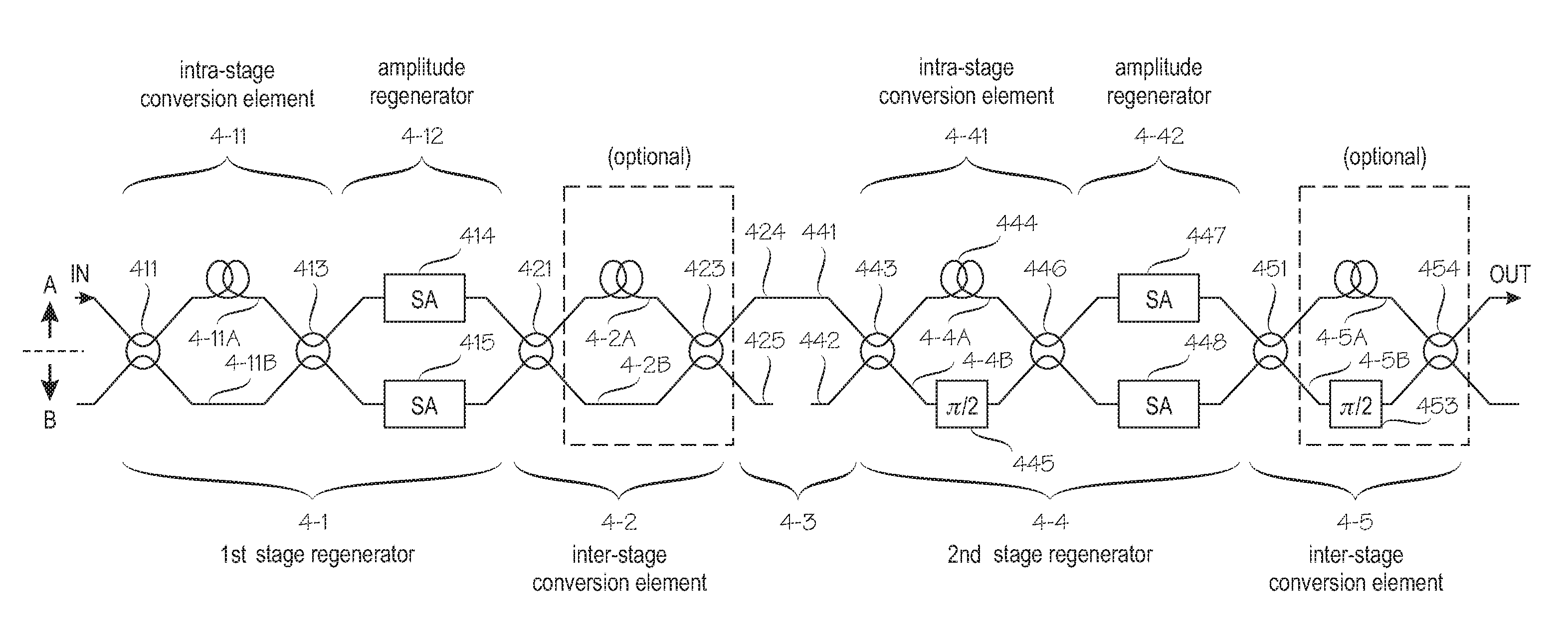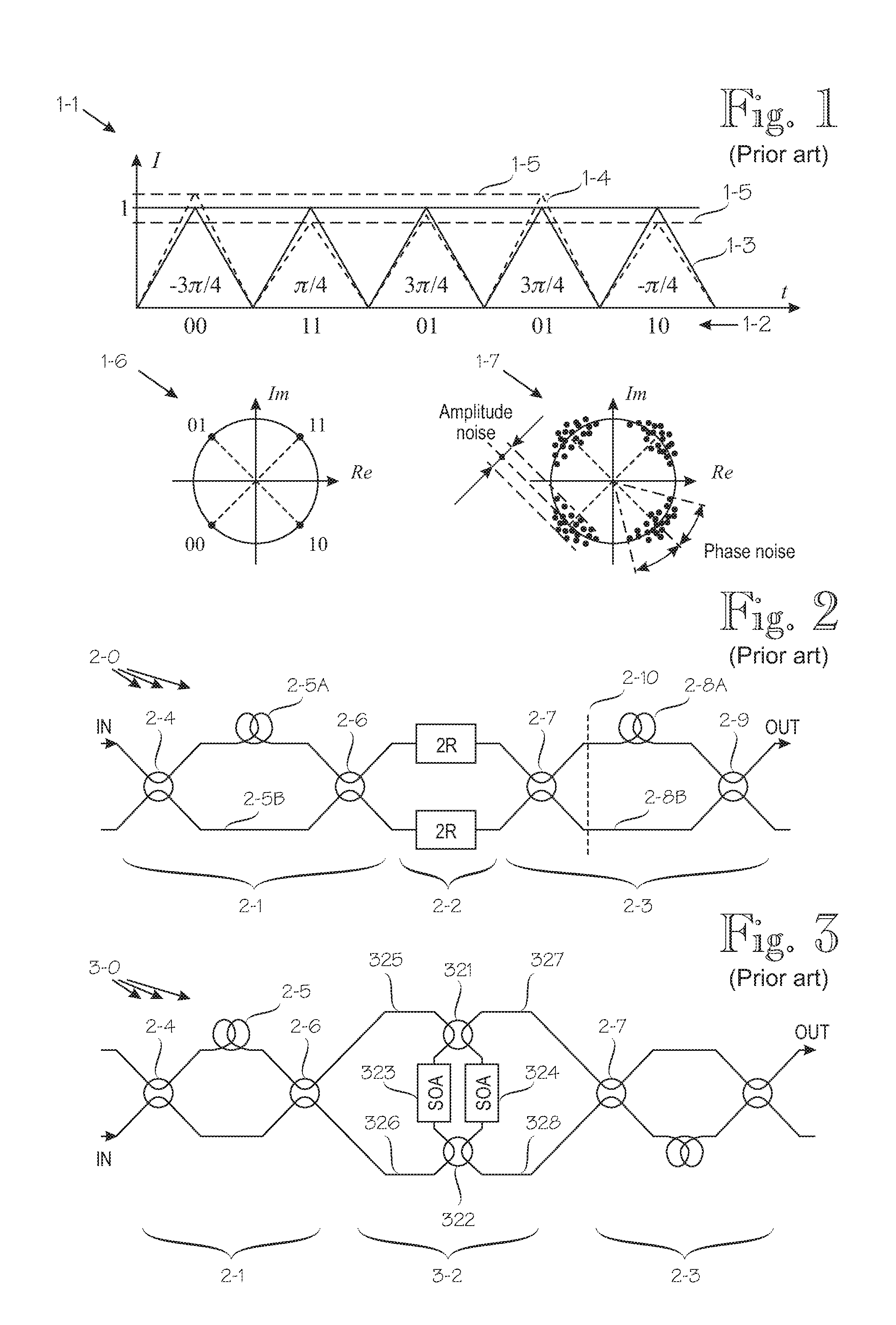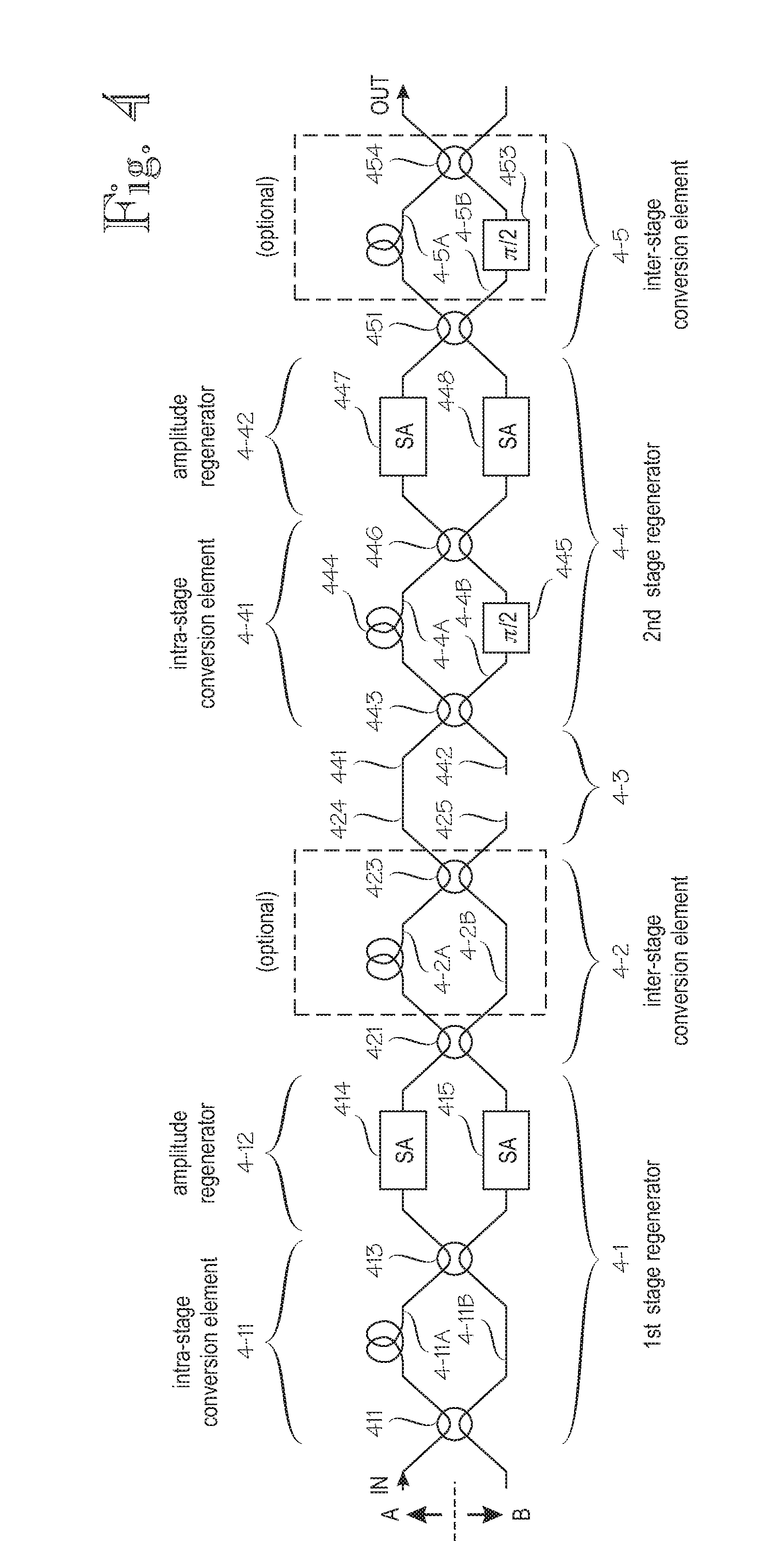Phase noise suppression in an optical system
- Summary
- Abstract
- Description
- Claims
- Application Information
AI Technical Summary
Benefits of technology
Problems solved by technology
Method used
Image
Examples
Embodiment Construction
[0067]FIG. 4 shows an embodiment for QPSK or DQPSK operation, wherein a first-stage regenerator 4-1 and a second stage regenerator 4-4 are coupled in a cascade arrangement such that the two regenerators regenerate symbol pairs with different nominal phase differences. Reference signs A and B generally denote the two signal arms of the arrangement. In the present embodiment, section or block 4-11 is a conversion element internal to the first stage regenerator, called herein an intra-stage conversion element. In the present embodiment it is implemented by means of a first delay interferometer, which comprises a first 3 dB coupler 411, a first optical path 4-11A, a second optical path 4-11B, and a second 3 dB coupler 413. The two optical paths 4-11A and 4-11B differ in optical path length by an amount which corresponds to a difference of one symbol period, as discussed above. As is known to those skilled in the art, structures involving interferometers are normally implemented such tha...
PUM
 Login to View More
Login to View More Abstract
Description
Claims
Application Information
 Login to View More
Login to View More - R&D
- Intellectual Property
- Life Sciences
- Materials
- Tech Scout
- Unparalleled Data Quality
- Higher Quality Content
- 60% Fewer Hallucinations
Browse by: Latest US Patents, China's latest patents, Technical Efficacy Thesaurus, Application Domain, Technology Topic, Popular Technical Reports.
© 2025 PatSnap. All rights reserved.Legal|Privacy policy|Modern Slavery Act Transparency Statement|Sitemap|About US| Contact US: help@patsnap.com



